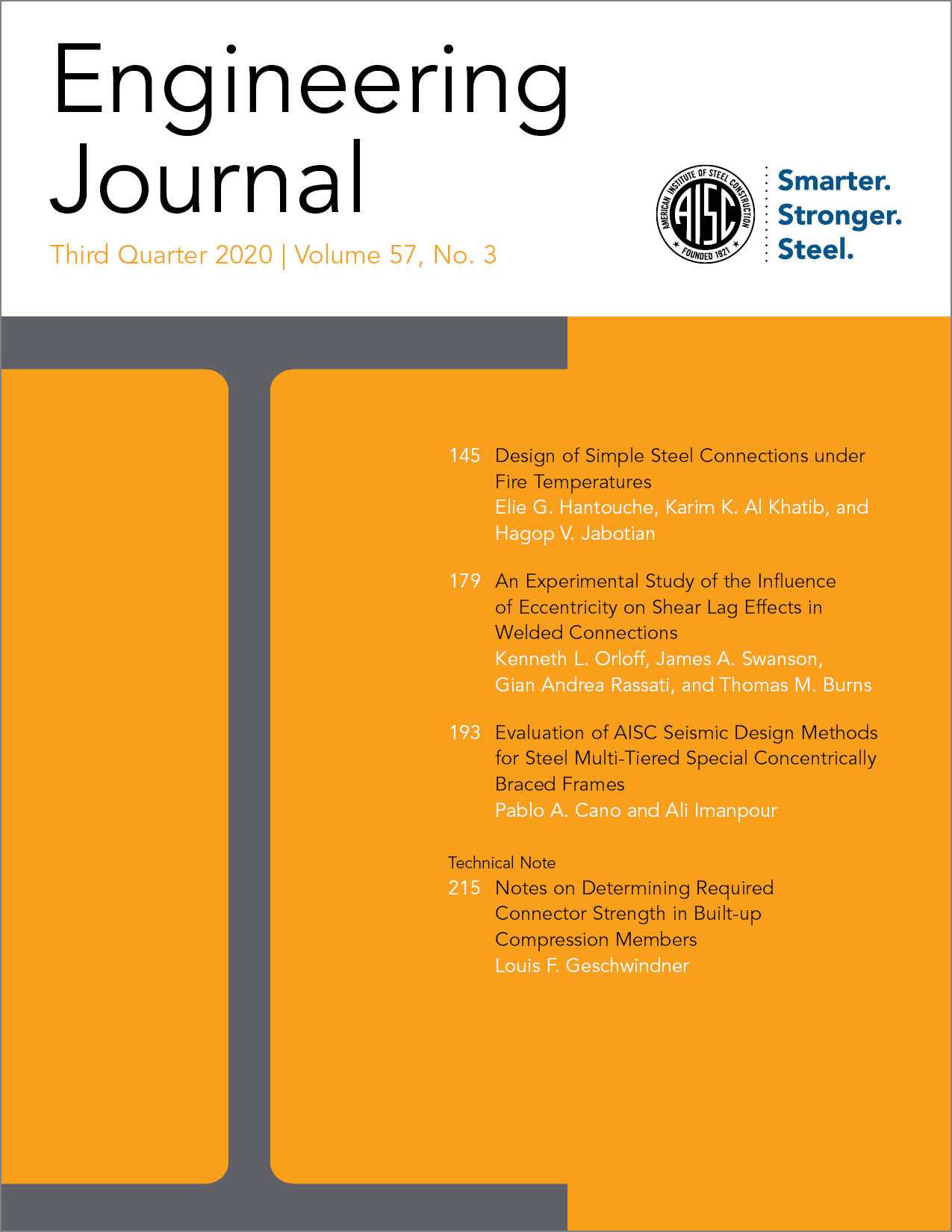An Experimental Study of the Influence of Eccentricity on Shear Lag Effects in Welded Connections
DOI:
https://doi.org/10.62913/engj.v57i3.1167Keywords:
Shear lag, angle, eccentric, tension memberAbstract
In the 2010 AISC Specification, the shear lag factor for longitudinally welded tension members was applicable only to plate-type members having equal length welds on each side with a minimum length equal to the distance between the welds (AISC, 2010). Fortney and Thornton (2012) used experimental data from three previous research programs consisting of 175 various tension members to develop a generalized shear lag model that addresses the aforementioned limitations. The members comprising this dataset consisted of 158 flat plates with equal weld lengths, 4 single angles with unequal but balanced weld lengths, and 13 other members having equal weld lengths. The shear lag factor presented in the 2016 AISC Specification Table D3.1, Case 4 (AISC, 2016b) is a product of Fortney and Thornton’s work and applies to longitudinally welded plates, angles, channels, tees, and W-shapes having equal or unequal lengths and no length-to-width limitation. This paper presents an experimental study on the shear lag effects in longitudinally welded tension members under both in-plane and out-of-plane eccentricity through the testing of eight 3×1/2 plate sections and twelve 3×3×1/2 single-angle sections having both equal and unequal longitudinal weld lengths. Experimental shear lag factors were determined for each of the 20 tested specimens and compared to three theoretical values: (1) the shear lag factor in the 2010 AISC Specification (AISC, 2010), (2) the shear lag factor based on a bi-planar model (Fortney and Thornton, 2012), and (3) the shear lag factor from Case 4 in the 2016 AISC Specification. The findings of this experimental study confirm that shear lag factor given by Case 4 in the 2016 AISC Specification provides the best prediction of shear lag factors in welded connections subject to both in-plane and out-of-plane eccentricity.

